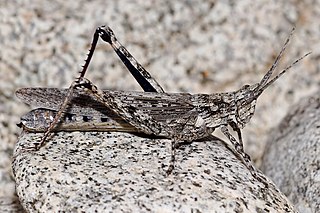
Acrididae, commonly called short-horned grasshoppers, are the predominant family of grasshoppers, comprising some 10,000 of the 11,000 species of the entire suborder Caelifera. The Acrididae are best known because all locusts are of the Acrididae. The subfamily Oedipodinae is sometimes classified as a distinct family Oedipodidae in the superfamily Acridoidea. Acrididae grasshoppers are characterized by relatively short and stout antennae, and tympana on the side of the first abdominal segment.

The Melanoplinae are a subfamily of grasshoppers in the family Acrididae. They are distributed across the Holarctic and Neotropical realms. They are one of the two largest subfamilies in the Acrididae. As of 2001 the Melanoplinae contained over 800 species in over 100 genera, with more species being described continuously.

Chorthippus is a large genus of acridid grasshoppers with around 230 described species. The genus may be subdivided into subgenera including: Altichorthippus, Chorthippus and Glyptobothrus, with other species not placed.
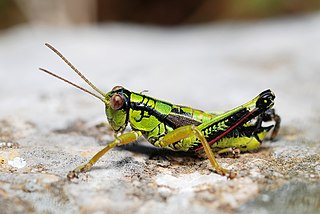
Miramella is a small genus of short-horned grasshoppers in the subfamily Melanoplinae. They are found in Europe and eastern Asia. As of January 2019, Orthoptera Species File lists seven species in three subgenera. The genus was first named in 1932. Miramella is the type genus of the subtribe Miramellina.
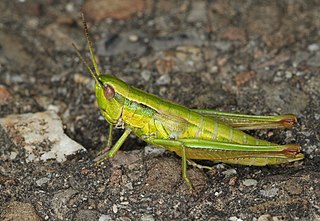
Gomphocerinae, sometimes called "slant-faced grasshoppers", are a subfamily of grasshoppers found on every continent but Antarctica and Australia.
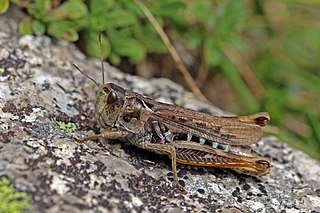
Gomphocerini is a tribe of grasshoppers of the family Acrididae.

Pseudochorthippus curtipennis, known generally as marsh meadow grasshopper, is a species of slant-faced grasshopper in the family Acrididae. Other common names include the meadow grasshopper and short-winged brown grasshopper. It is found in North America.
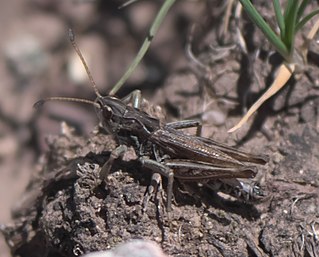
Aeropedellus is a genus of slant-faced grasshoppers in the family Acrididae. There are more than 20 described species in Aeropedellus.

Aeropedellus variegatus is a species of Palearctic grasshoppers in the tribe Gomphocerini.

Chorthippus apicalis is a species of slant-faced grasshopper in the family Acrididae, found on the Iberian Peninsula.
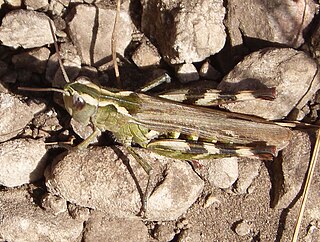
Chorthippus binotatus, the two-marked grasshopper, is a species of slant-faced grasshopper in the family Acrididae. It is found in Europe.
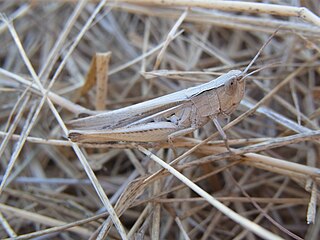
Chorthippus bornhalmi is a species of slant-faced grasshopper in the family Acrididae. It is found in southern Europe and southwest Asia.
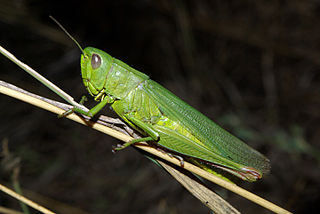
Chorthippus jucundus is a species of slant-faced grasshopper in the family Acrididae. It is found in Europe.

Sphingonotus rubescens is a species of band-winged grasshopper in the family Acrididae. It is found in the Palearctic.
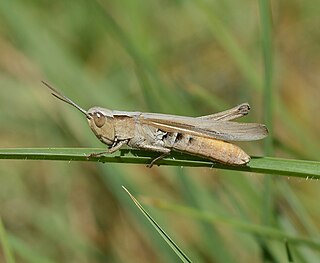
Chorthippus dichrous is a species of slant-faced grasshopper in the family Acrididae. It is found in the Palearctic.
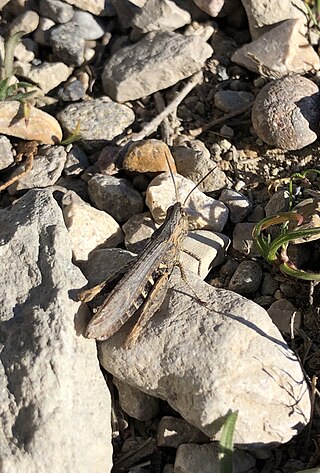
Chorthippus jacobsi, the Iberian field grasshopper, is a species of slant-faced grasshopper in the family Acrididae. It is found on the Iberian Peninsula.

Chorthippus yersini, or Yersin's grasshopper, is a species of slant-faced grasshopper in the family Acrididae. It is found on the Iberian Peninsula.

Gesonula mundata is a species of short-horned grasshopper in the family Acrididae. It is found in Southeast Asia and Oceania.
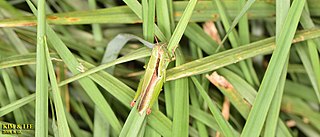
Oxya sinuosa is a species of short-horned grasshopper in the family Acrididae. It is found in eastern Asia.
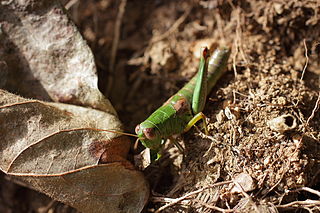
Parapodisma is a genus of spur-throated grasshoppers in the family Acrididae. There are about 12 described species in Parapodisma, found in Japan, China, and South Korea.




















